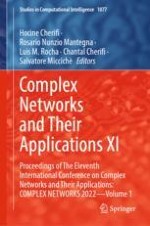2023 | OriginalPaper | Chapter
Individual Fairness for Social Media Influencers
Authors : Stefania Ionescu, Nicolò Pagan, Anikó Hannák
Published in: Complex Networks and Their Applications XI
Publisher: Springer International Publishing
Activate our intelligent search to find suitable subject content or patents.
Select sections of text to find matching patents with Artificial Intelligence. powered by
Select sections of text to find additional relevant content using AI-assisted search. powered by
